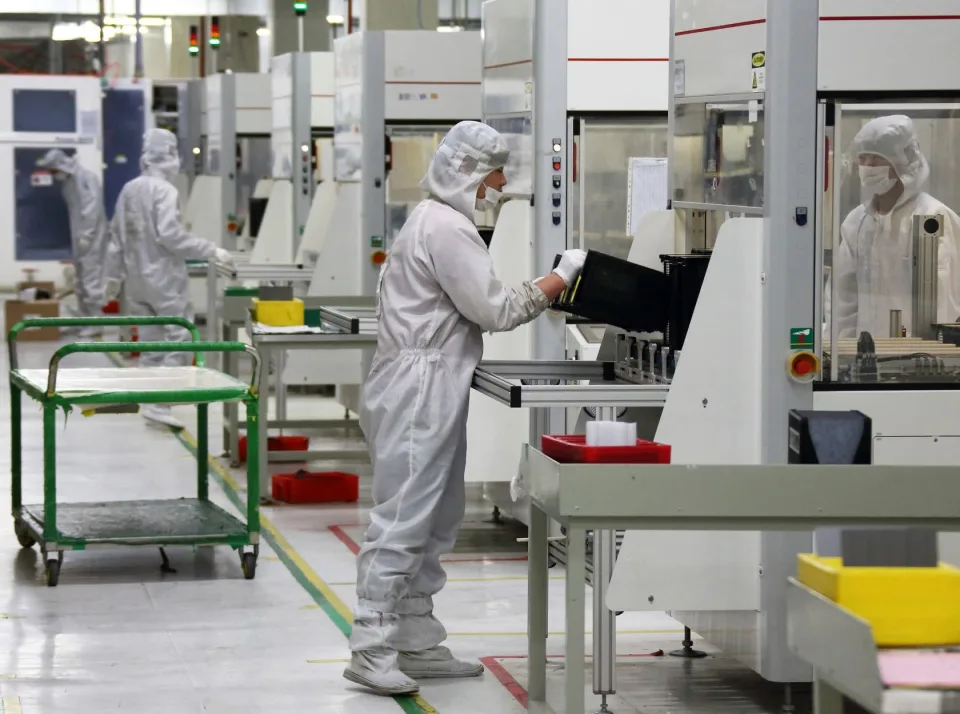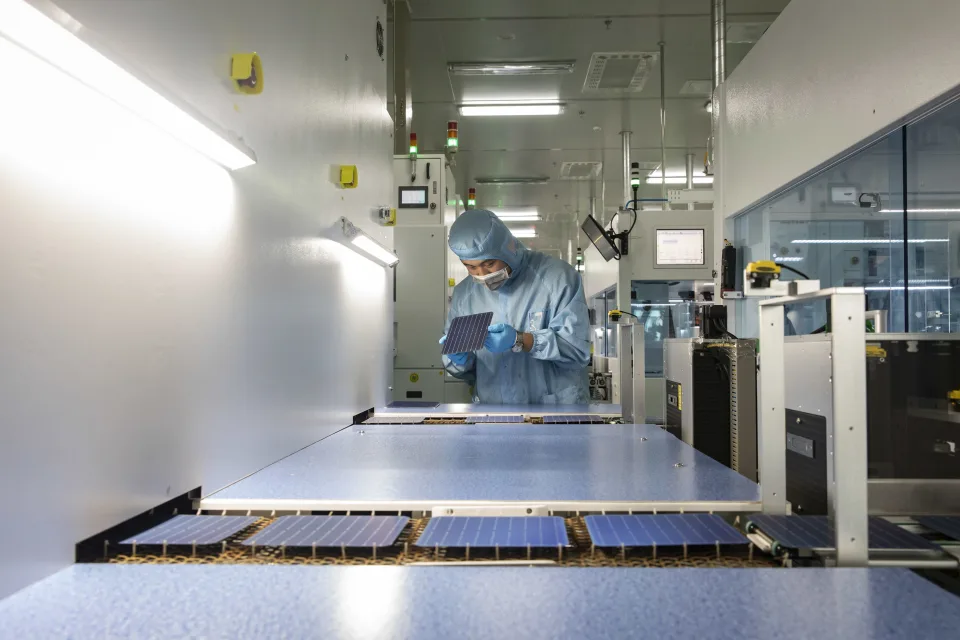
The combatants are the world’s biggest solar manufacturers, pitting industry leader Longi Green Energy Technology Co. against the world’s second-biggest player Trina Solar Co. And the battle involves bragging rights over the ideal size for wafers, the key component for making solar modules: Which is better, Longi’s 182-millimeter version, or Trina’s 210-millimeter?
The rivalry is similar to that between Airbus and Boeing in determining which airplane is best for the world’s carriers. Yet the stakes are arguably higher when it comes to manufacturing the powerful equipment that transforms sunlight into electricity, as nations set ambitious plans for ramping up renewable energy capacity.
Who gains the advantage in the current battle stands to substantially accelerate an already impressive growth record. Longi’s market cap has soared nearly eight-fold to $63 billion since the end of 2018, while Trina’s almost quadrupled to $20 billion from its trading debut two years ago.
The wafer war has been brewing for more than two years, as Longi sought to press pause on a decade-long race to make solar panels larger. The company has gone to the media and industry forums to campaign for its choice, criticizing its rival’s version as too big to produce reliable panels.
“We do not see evident value in increasing the size of modules — instead the risk has clearly risen,” said Li Shaotang, senior product manager of Longi Global Sales & Marketing Center. “Unlimited expansion could lead the industry the wrong way.”

Trina, meanwhile, has defended its position to continue expanding panel sizes.
“Growing from small to large is the long solar wafer development history,” said Zhang Yingbin, head of Trina’s product strategy and marketing. “It is the No. 1 trend of the industry.”
Wafers, the ultra-thin square slice of semiconductor, are the base unit for solar manufacturing. They are wired into solar cells of the same size before being assembled into panels. The larger the wafer size, the easier to make larger modules, which could make electricity generation from solar cheaper.
In addition to being the world's biggest solar panel maker, Longi is also the top wafer producer and sells them to other companies as well. Trina mostly relies on other suppliers for its wafers.
Just three years ago, Longi was in the position of defending larger wafers as it tried to push the industry to adopt its 166-millimeter version as the new standard over smaller predecessors. Then Trina leapfrogged it in 2020, announcing solar modules based on 210-millimeter wafers. Longi responded with its 182-millimeter alternative, which has the added benefit of being able to be produced in Longi's existing factories.
The two solar giants have since then introduced more powerful panels based on the two wafer sizes, with Trina’s largest module having 670 watts of capacity while Longi’s largest reaches 550 watts, far exceeding the maximum 400-watt models over much of the past decade.
With both sides actively campaigning for their standard, the 182 and 210 wafers combined have taken over half of the market as of 2021. The share is expected to reach 79% this year, according to PVInfolink.
Longi’s Li said 182 is currently the best size for producing reliable and efficient solar panels. The company said larger panels made from 210 wafers are less resistant to extreme weather such as strong wind and hail given the expanded surface area. The slightly smaller solar modules based on 182 wafers could fit into cargo containers better, cutting transportation costs at a time of expensive global shipping, Li said.
Trina defended the quality of its panels, saying they have been examined by international verifiers and are operating well in markets around the world. Thanks in part to Longi's criticisms, Trina enhanced the caliber of protective glass for its modules, and employed wider frames to increase their resistance to external forces, Zhang said.
“What they think can’t be done doesn’t mean others cannot either,” he said. “Because of their challenge, we have done thorough work.”
The rivalry has divided the industry into two camps. Longi led six other companies, including JA Solar Technology Co. and Jinko Solar Co., to establish an alliance backing its wafer standard. Trina joined hands with Longi’s biggest competitor in wafer manufacturing, Zhonghuan Semiconductor Co., and dozens of other supply-chain companies to expand production for large-capacity panels based on 210 wafers.
Despite the split, most manufacturers for now are also hedging their bets, building new production capacities that can switch between 182 and 210 wafers. Even Longi says its facilities can produce wafers as large as 230 millimeters, while Trina recently introduced a smaller rectangular wafer size with 182 and 210 as its edges.
“I don’t think that the future of solar is just wafers getting bigger and bigger, because you do start to hit limits on how big the glass can be to remain stiff enough to withstand high wind,” said Jenny Chase, lead solar analyst at BloombergNEF. “That said, there may be a few wafer sizes to go."